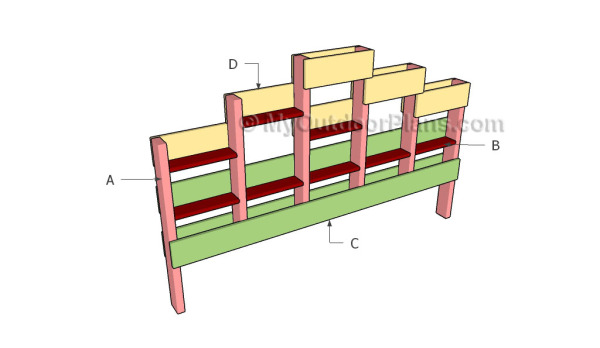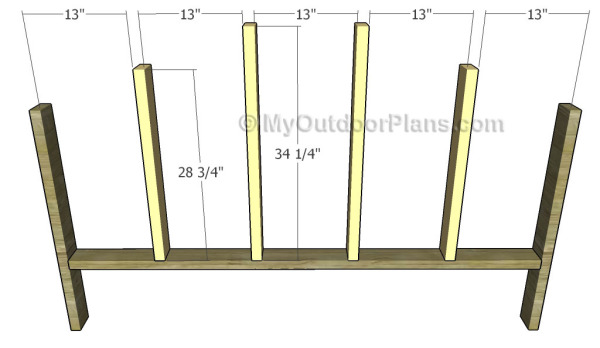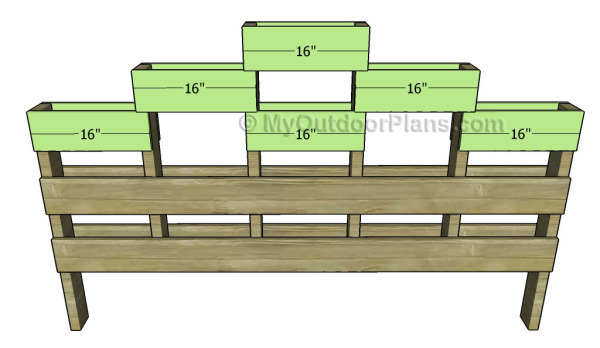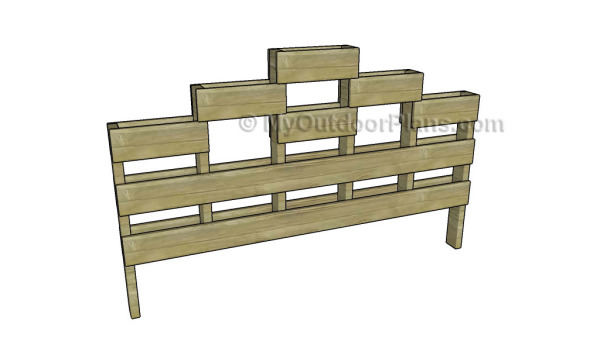This step by step diy woodworking project is about herb garden plans. If you want to learn more about building a herb garden, we recommend you to take a look over the instructions described in the article. Work with good judgement and don’t forget to take a look over the rest of the related plans, as there are many designs and woodworking projects to select from.
Work with attention and don’t forget that a good planning will save you from many issues and it will keep the costs within the total budget. Invest in high quality materials, such as pine, redwood or cedar. Drill pocket holes before inserting the galvanized screws, to prevent the wood from splitting. Add waterproof glue t the joints, in order to enhance the rigidity of the structure. See all my Premium Plans HERE.
Projects made from these plans
Herb Garden Plans

Building a herb garden
Cut & Shopping Lists
- A – 2 pieces of 2×4 lumber – 36″ long, 2 pieces – 28 3/4″ long, 2 pieces – 34 1/4″ long LEGS
- B – 1 piece of 2×4 lumber – 71″ long, 11 pieces of 1×4 lumber – 13″ long SUPPORTS
- C – 4 pieces of 1×6 lumber – 74″ long PLANTER
- D – 12 pieces of 1×6 lumber – 16″ long PLANTERS
- 4 pieces of 2×4 lumber – 8 ft
- 6 pieces of 1×6 lumber – 8 ft
- 2 pieces of 1×4 lumber – 8 ft
- 2 1/2″ screws
- 1 1/4″ screws
- wood putty, wood stain
Tools
![]() Hammer, Tape measure, Framing square, Level
Hammer, Tape measure, Framing square, Level
![]() Miter saw, Drill machinery, Screwdriver, Sander
Miter saw, Drill machinery, Screwdriver, Sander
Time
![]() One day
One day
Related
Building a herb planter

Building the frame of the herb garden
The first step of the project is to build the frame of the herb garden. Build the legs and the bottom of the planter out of 2×4 lumber. Drill pocket holes at both ends of the bottom component and secure it to the vertical legs by using 2 1/2″ screws. Make sure the corners are square and add glue to the joints.

Fitting the partitions
Continue the project by fitting the 2×4 supports to the wooden structure. Drill pilot holes at one end of the supports and secure them to the planter by using 2 1/2″ screws. Add glue to the joints and remove the excess with a damp cloth.

Building the bottom planters
Continue the project by fitting the slats to the bottom of the garden planter, as described in the diagram. Align the edges with great attention and secure the slats to the structure by using finishing nails and glue. Make sure the slats are perfectly horizontal.

Building the top planters
In order to get the job done in a professional manner, we recommend you to build the top planters. Use 1×6 lumber for the side components and finishing nails to lock them to the supports properly.
Align the slats with attention and make sure the edges are flush. Leave no gaps between the components and add glue to the joints. Smooth the edges with great care and take care of the finishing touches.

Herb garden plans
One of the last steps of the woodworking project is to take care of the finishing touches. Therefore, fill the pilot holes with wood putty and smooth the surface with 120-grit sandpaper.
Top Tip: If you want to enhance the look of the project and to protect the desk from decay, we recommend you to cover the components with paint or stain. Place the herb planters in a proper location and move it whenever necessary.
This woodworking project was about herb garden plans. If you want to see more outdoor plans, we recommend you to check out the rest of our step by step projects. LIKE us on Facebook and Google + to be the first that gets out latest projects and to hep us keep adding free woodworking plans for you.
